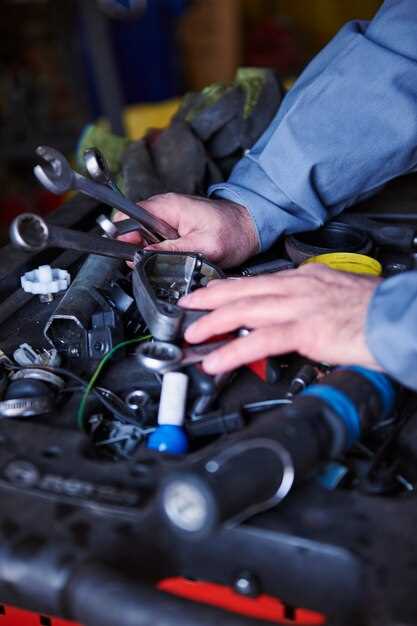
The catalytic converter plays a crucial role in your vehicle’s exhaust system, serving to reduce harmful emissions and improve overall engine efficiency. Over time, however, this vital component can wear out or become damaged, leading to a variety of performance issues. Identifying the signs that indicate it’s time to replace your catalytic converter is essential for maintaining your vehicle’s health and ensuring compliance with environmental standards.
One of the first indicators of a failing catalytic converter is a noticeable drop in engine performance. This may manifest as a decrease in acceleration or power, making it difficult to achieve optimal speeds. Additionally, you might experience unusual engine noises, such as rattling sounds, which can signal internal damage to the converter itself. Paying attention to these symptoms is vital for preventing further engine problems and ensuring a smooth driving experience.
Another critical sign to watch for is the illumination of your vehicle’s check engine light. This warning can be triggered by a malfunctioning catalytic converter, often accompanied by error codes related to exhaust system performance. Ignoring this warning can lead to more severe engine issues and costly repairs down the line. By recognizing these signs early, you can take proactive steps to replace your catalytic converter and preserve your vehicle’s functionality.
Unusual Sounds Indicating Catalytic Converter Failure

When your vehicle’s catalytic converter begins to fail, it often manifests through distinctive sounds that can signal underlying issues. Recognizing these sounds early can help you address problems before they escalate.
Rattling Noises: A common sign of a failing catalytic converter is a rattling noise coming from underneath the vehicle. This noise typically occurs when the internal components, such as the catalyst substrate, become loose or break apart. If you hear this sound, it may indicate that the converter is disintegrating and needs immediate attention.
Hissing or Buzzing Sounds: If you notice hissing or buzzing sounds when your engine is running, this could be the result of exhaust gases escaping from a damaged catalytic converter. This escape can lead to reduced performance and increased emissions, warranting an inspection.
Thumping or Popping: Abnormal thumping or popping noises can arise due to changes in the exhaust flow caused by a clogged or failing catalytic converter. These sounds may indicate that exhaust gases are not being released efficiently, creating back pressure in the system.
Silent Exhaust: A complete failure may result in a significantly quieter exhaust system. If your exhaust sounds are unusually muted or almost silent, your catalytic converter might have become so obstructed that exhaust gases struggle to exit, affecting engine performance.
Engine Misfires: While not a sound per se, the symptoms of engine misfires can create a variety of noises, including popping or sputtering. When the catalytic converter is impaired, it can lead to back pressure and ultimately result in misfires, producing irregular sounds from the engine compartment.
Overall, being aware of these unusual sounds can help you determine when it’s time to seek professional assistance for your catalytic converter. Early detection and action can prevent further damage to your vehicle’s exhaust system.
Decreased Engine Performance and Fuel Efficiency
A well-functioning catalytic converter plays a critical role in ensuring optimal engine performance and fuel efficiency. When it begins to fail, several noticeable symptoms may arise, indicating it might be time for a replacement.
Below are the key indicators of reduced engine performance and fuel efficiency associated with a malfunctioning catalytic converter:
- Loss of Power: A significant reduction in engine power can occur when exhaust gases are not effectively expelled. Drivers may notice poor acceleration, particularly during high-demand situations such as merging onto highways.
- Engine Misfires: A clogged catalytic converter can lead to incomplete combustion, resulting in engine misfires. This often manifests as a rough idle or sputtering during acceleration.
- Decreased Fuel Economy: An inefficient catalytic converter forces the engine to work harder, which can lead to increased fuel consumption. If you’re noticing more frequent trips to the gas station, this may be a warning sign.
- Unusual Engine Noises: Sounds such as hissing or rattling from the engine compartment may suggest that the catalytic converter is damaged or clogged, further impacting performance.
- Check Engine Light: A persistent check engine light can indicate various engine issues, including those related to the catalytic converter. Having the vehicle diagnosed can help pinpoint the problem.
Addressing these performance issues promptly can help restore your vehicle’s efficiency and prevent further damage to the engine. Regular maintenance can also prevent catalytic converter failure and prolong its lifespan.
Check Engine Light and Diagnostic Codes Related to Emissions

The Check Engine Light (CEL) is a crucial indicator of your vehicle’s health, particularly concerning its emissions system. When this light illuminates, it’s a signal that the vehicle’s onboard diagnostics (OBD) have detected an issue that may impact emissions. Understanding the associated diagnostic codes can help pinpoint problems, including potential catalytic converter failure.
Diagnostic trouble codes (DTCs) related to emissions may include codes such as P0420 or P0430, which specifically denote catalyst system efficiency below the threshold. These codes suggest that the catalytic converter is not functioning optimally, resulting in increased emissions. When you retrieve these codes using an OBD-II scanner, it’s essential to interpret them correctly and assess whether they point toward a catalytic converter issue or another component in the emissions system.
Other related codes may surface, indicating problems with oxygen sensors or exhaust gas recirculation systems, which can indirectly affect the performance of the catalytic converter. For instance, codes like P0131 or P0132 pertain to oxygen sensor malfunctions, which are vital for the catalytic converter’s operation. If these sensors fail, the converter may not receive accurate information, leading to poor performance and higher emissions.
Regularly monitoring the CEL and promptly diagnosing any codes can prevent further damage to the catalytic converter and other emissions components. Ignoring these signals may lead to degraded engine performance and potential fines for exceeding emissions standards.
In summary, the CEL and diagnostic codes serve as early warnings of emissions-related issues. If you encounter persistent warnings, especially codes linked to the catalytic converter or oxygen sensors, taking action sooner rather than later is vital to maintain vehicle efficiency and compliance with environmental regulations.


